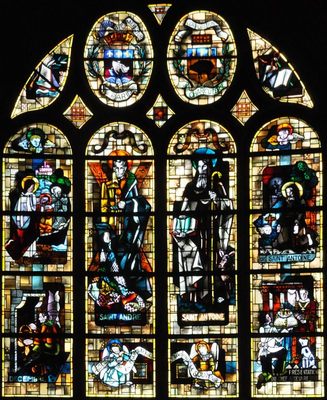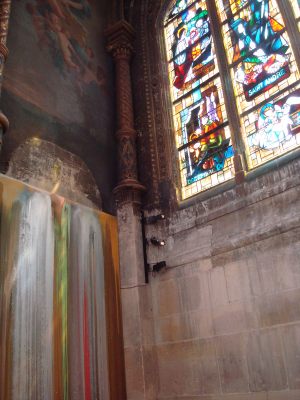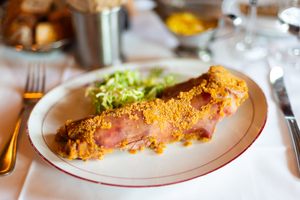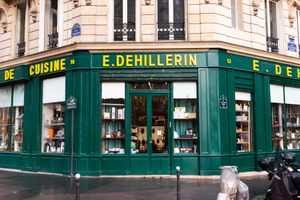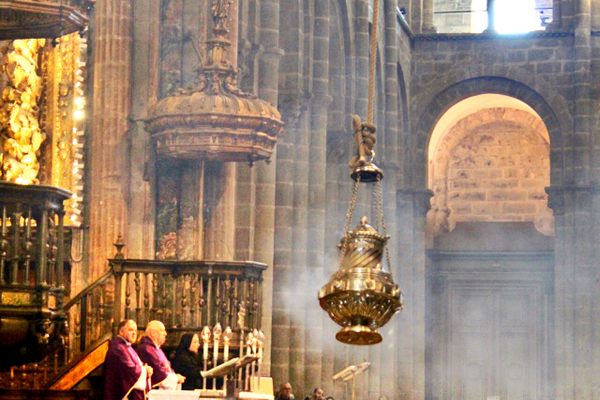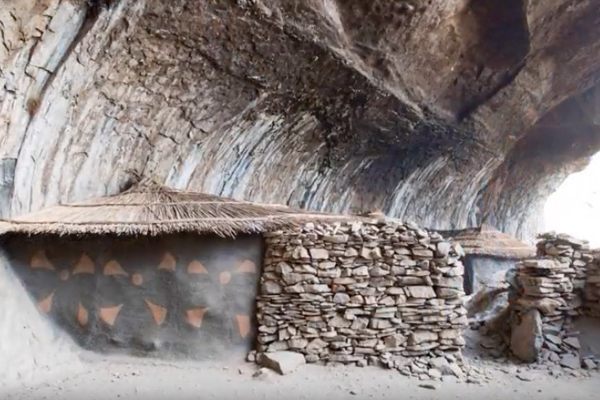About
The Rue Coquillere is haunted by pigs.
The lingering smell still hangs in the air: lard, pork meat, and pig skins that were once sold in the former Marche des Halles, what was once the “Guts of Paris” marketplace but was demolished in 1971. The legendary Pied de Cochon restaurant, well-known for its fried pig-foot specialities and its tipsy swine signage has been helping to keep the pork tradition alive since the forties. This area has a penchant for attracting hungry revelers in need of a porky-flavored nightcap, and provides it proudly.
These are reasonable if not quirky elements of local pork worship, but the area has a surprising sausage supporter, probably the last place one would expect a cortege of salami. Saint Eustache Church, with its imposing Gothic edifice and an appearance more like the Notre Dame cathedral than the local delicatessen, also pays homage to the delicacies of the swine.
The Corporation des Charcutiers, which acts as the pork butcher's professional body, is one of the most important in France. A synonym of its ancient traditional patrimony and gastronomic excellence, the profession also has an amusing history stretching back into the late Middle Ages.
Pork butchers separated themselves from the rest of the butcher guild in 1476, to guarantee the hygiene and specific control that pork meat required to remain safe. It was a bold split that would enhance the status of their profession and allow the charcutiers to kill livestock themselves, allowing them to smoke, salt or cook the meat in an array of tasty fashions.
Over the centuries, the corporation established itself as a very powerful lobby, and found itself occasionally fighting pesky backlashes fueled by rumors of human flesh being used in the sausage. In an effort to maintain their honor, they often reached out to the community, supporting the poor, the Catholic Church, and among other sympathetic financing roles, the never-ending construction of the glorious Saint Eustache Church. In a gesture of gratitude, what is now the tallest church tower in Paris became dedicated to its generous bacon-handling patrons.
Looking in what is known today as the Parisian Charcutiers' Chapel, you can witness this symbol of thanks, depicted in a very large stained-glass window in all its glory. The “Three Sausages and Swine” coat of arms belonging to the guild is a pork-related iconography nestled in a very unlikely setting. The depiction includes Saint Antoine, Patron Saint of the corporation, escorted by a pink piglet and in his particular white apron genuflecting in front of a priest. The saint is presenting him his “Chef D'Oeuvre,” an unidentified plate-like object that is presumably garnished with delicious holy pork snacks.
In 1989, the chapel unfortunately suffered a fire which reduced the original altar to ashes. During a renovation of the lower part of the chapel in 2000, the charcutiers commissioned an art installation by contemporary artist John Armleder, consisting of two of his “Pour” paintings and a plexiglass altar with a clear urn. Mass is held in the tiny chapel annually, in memory of the pork butchers who died that year. The charcutiers mourn their departed peers with live music and singers, and place the names of the deceased companions in Armleder's urn.
If you visit the Charcutiers' Chapel, don't forget to have a look at the silver altar piece made by New York street artist Keith Haring, another curiosity of the Saint Eustache Church, which holds a collection of numerous contemporary art relics.
Related Tags
Know Before You Go
Metro - Chatelet / Les Halles
Etienne Marcel ( 4 )
Published
January 21, 2013

